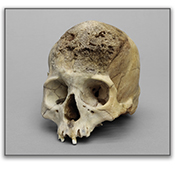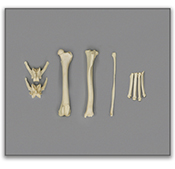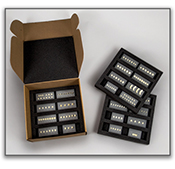
January 2018 Newsletter
New Category: Bioarchaeology
(Osteoarchaeology, Paleopathology, Zooarchaeology, Marine Archaeology, Dental Anthropology)
New Product: The Turner-Scott Dental Anthropology System - Dental Plaque Set

|
January - A new year; a fresh start; a new perspective. We are delighted to announce a new category of product at the crossroads of osteology and archaeology created to fill the needs of scientists and students who study, identify and analyze biological remains within their cultural (archaeological) context in order to answer questions about diet, health, migration, and lifestyle in the near and distant past:
Bioarchaeology
(located in our fields of study menu)
Complex archaeological burial sites may contain multiple human and animal remains. To best interpret findings at such sites, an interdisciplinary approach encompassing broad training in all anthropological fields has emerged. The field of bioarchaeology takes into consideration the origin, form and differences in human and non-human remains to answer questions about evolution and past societies.
In this category we have curated a selection human and animal bones that may be instructive in a classroom setting, and useful as identification aids in the field. Included are specimens such human bones (male and female) representing a range of ages, and ancestry, animal species that are frequently found in historic and archaeological sites, and human and zoological pathology, trauma, and dental specimens.
|

|
|
Within the overall category, are sub-categories with specific focus.
|

|
Dental Anthropology is a subfield of biological anthropology that uses the dentition of human and non-human primates to explore, and hopefully gain knowledge on how populations are related, and how diet and other environmental factors affected them.
Our newest product is the cornerstone of this subcategory: The Turner-Scott Dental Anthropology System Dental Plaques are a series of 24 reference plaques that highlight human tooth morphology and variation.
|
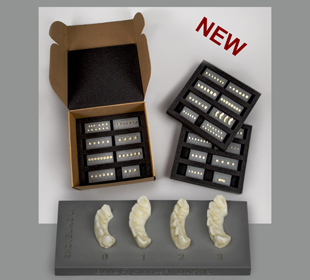
|
|
Osteoarchaeology contains specimens useful for identification of human remains, their ancestry, age and sex. A range of osteological material is represented, including comparative sets, dental examples, bone boxes, long bones, cranial bones, hands & feet, fetal, subadult and adult skulls and postcranial specimens. Also represented are two sets of tools, one which was found with 5-year-old child skeleton, the other which is composed of 21 Neanderthal tools.
|
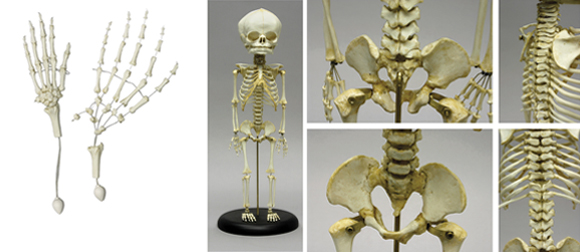
|

|
Paleopathology contains specimens displaying evidence of disease and trauma of both once-living human and nonhuman remains. Disease specimens such as: hyperostosis frontalis interna, tuberculosis, hydrocephaly, acromegaly, syphilis, leishmaniasis, meningioma, button osteoma, porotic hyperostosis, arthritis, rickets, osteoporosis, diffuse idiopathic skeletal hyperostosis, scoliosis, spina bifida, osteoarthritis, osteosarcoma, ankylosing spondylitis. Trauma specimens such as: various types of blunt and sharp force, gunshots, fracture (including healed fractures), and cranial binding.
|
|
Zooarchaeology contains specimens of animal species that are frequently found in historic and archaeological sites, such as dog, horse, deer, coyote, bear, cat, fox, javelina, and multiple bird species. Skulls, claws, talons, eggs, wings, and forelimbs are represented.
Human interaction with animals is one of the few commonalities that can be explored across all cultures throughout history and prehistory. Animal remains found in this context give insight into how humans used the surrounding environment for agriculture, hunting and gathering, settlements, domestication of animals and rituals.
|
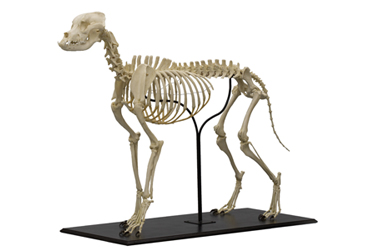
|

|
Marine Archaeology is the study of the interaction of humans with the sea, rivers, lakes, and other waterways. Animal remains found among shipwrecks and submerged coastal settlements can provide valuable information on the lives of the inhabitants, and how the site evolved over time. These finds can also give insight into changes in sea level, erosion or deposition by rivers.
Included in this category are full and partial skeletons of a manatee and dolphin, walrus and sea lion baculum, shark jaws (multiple species), and teeth from shark, whale, and alligator. Also represented are marine mammal skulls such as otter, sea lion, seal, alligator and crocodile.
|
Until next time...
All images and text © 2017 Bone Clones, Inc.
|



